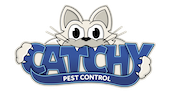History of Pest Control
Excerpted from Origins of Pest Control – James Goddard
Perhaps more than people realize, the practice of pest control and public health are intricately related.
For example, Pest Control companies provide society a valuable health function by preventing and controlling pests that carry diseases.
Long before anyone understood the “germ theory”, it was recognized that insects might produce diseases. The ancient Babylonians worshipped a god of pestilence, which was represented as a two-winged fly, so they must have somehow related flies with disease. About 2500 B.C., a Sumerian doctor inscribed on a clay tablet a prescription for sulfur in the treatment of itch, a substance we now know kills itch and chigger mites.
Recorded Instances of Insect-Borne Diseases & Infestations Are Found in the Old Testament
Other recorded instances of insect-borne diseases and infestations can be found in the Bible’s Old Testament, beginning with accounts of plagues on the Egyptians.
Later, in Classical Greece, science, medicine, philosophy and the arts flourished for almost 500 years. Asclepius was the patron saint of Greek medicine and his daughter, Hygeia, was considered the saint of preventive medicine (some health departments still use the image of Hygeia as their logo).
The Romans made great strides in sanitation, civil engineering and hygiene, with construction of numerous aqueducts and sewage systems. They also were among the first to develop baths and indoor sanitation measures.
Organized, purposeful pest control probably had its origins during the early Middle Ages (500-1100 A.D.) as a result of people trying to get rid of rats. A few chemicals or plant extracts were known to kill rats during that time, but people tried all sorts of other methods as well.
The Pied Piper
During the Middle Ages, the ratsbane seller was a street and market vendor who sold a variety of chemicals and rodent traps. A little later, this developed into a profession called the “rat catcher.” Rat catchers were colorful figures often dressed in fancy clothing who appeared at county fairs and marketplaces performing juggling acts, story-telling and magic tricks. Perhaps the most famous rat catcher story is Robert Browning’s 1842 version of the Pied Piper of Hamelin, in which the rat catcher agrees — for a fee — to drive a plague of rats into the Weser River. When he doesn’t get paid, he entices the children of the town away by the sounds of his pipe.
Rat Catchers
By the early 18th century, rat catchers of Europe had become highly specialized and used a variety of pest control methods such as traps, chemicals and terrier dogs trained to find and kill rats. The first official pest control company was H. Tiffin and Son Ltd. in London, which had its beginnings around 1690, promoting rat and bed bug control using methods and chemical compounds they invented. Tiffin and Son had the trademark, “Bug Destroyers to Her Majesty and the Royal Family.” More than a century later (about 1850), a famous rat catcher, Jack Black, was called the “Rat and Mole Destroyer to Her Majesty Queen of the United Kingdom.” Vermin exterminators from England and Germany eventually emigrated to the United States from about 1840 to 1930, carrying with them their knowledge of pests and pesticides. These early European exterminators founded the American urban and structural pest control industry.
Pesticide Development and Use Has Gone Through Several Phases
Pesticide development and use has gone through several phases. The “first-generation” pesticides consisted of such things as kerosene, sulfur, arsenate of lead and nicotine sulfate. These were often applied by Flit guns (named after an insecticide used for fly control) or other primitive dusting or application equipment.
During and immediately after World War II, far more potent “second-generation” pesticides were developed, including the chlorinated hydrocarbons such DDT, and later in the 1950s-60s, several new carbamates and organophosphates were added to the repertoire of insecticide chemistries.
Modern Day Pest Control
Environmental concerns led to the eventual restriction of many of carbamates and organophosphates, leading the way for research and development of “third-generation” products we use today such as pheromones, insect hormones, host attractants and other biocontrol agents. More recently, the green movement has spurred the use of even more “safe” repellents and pesticides, such as those composed of food-grade essential oils.
The pest control industry has come a long way from the time of the rat catcher.






